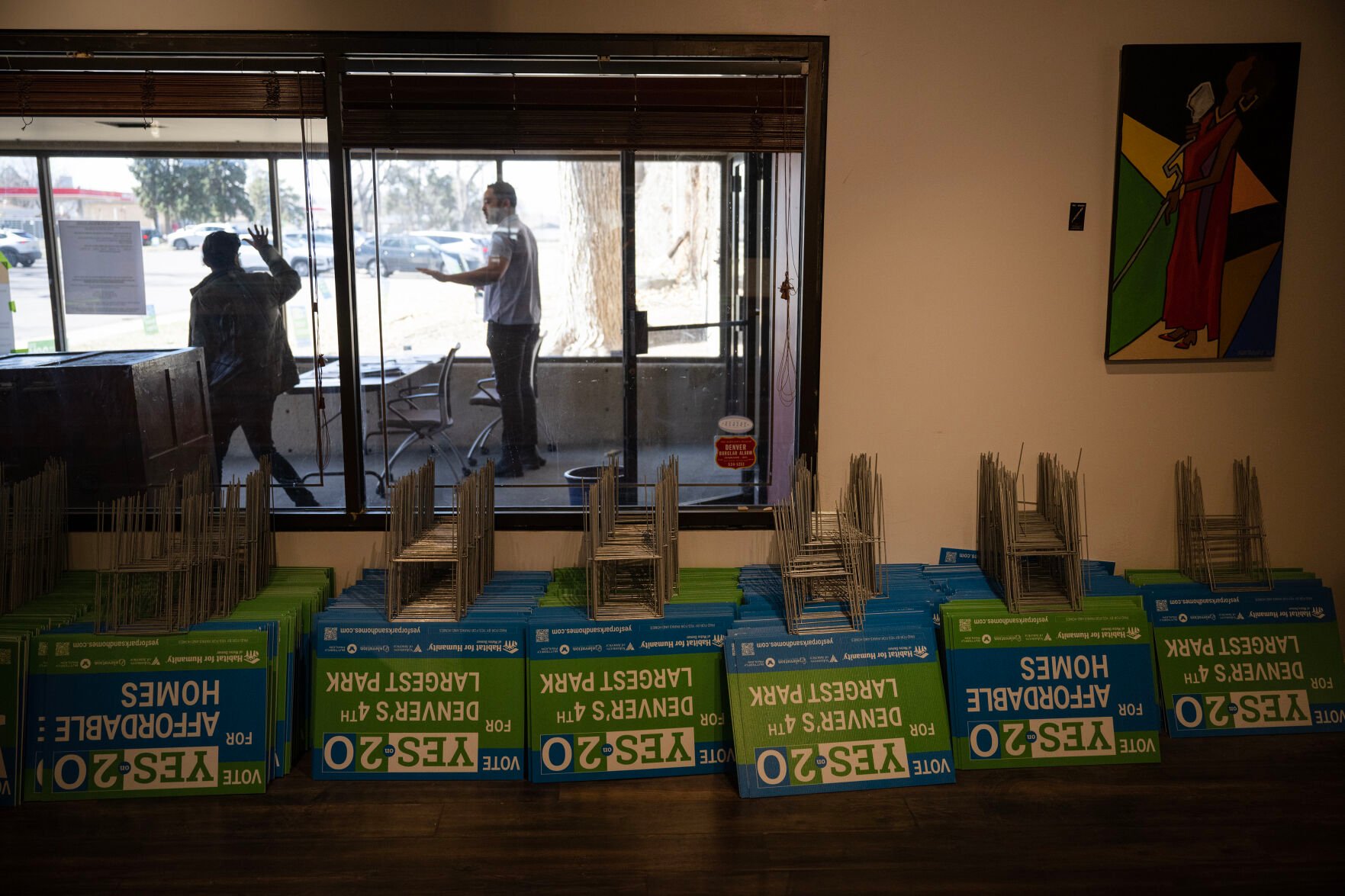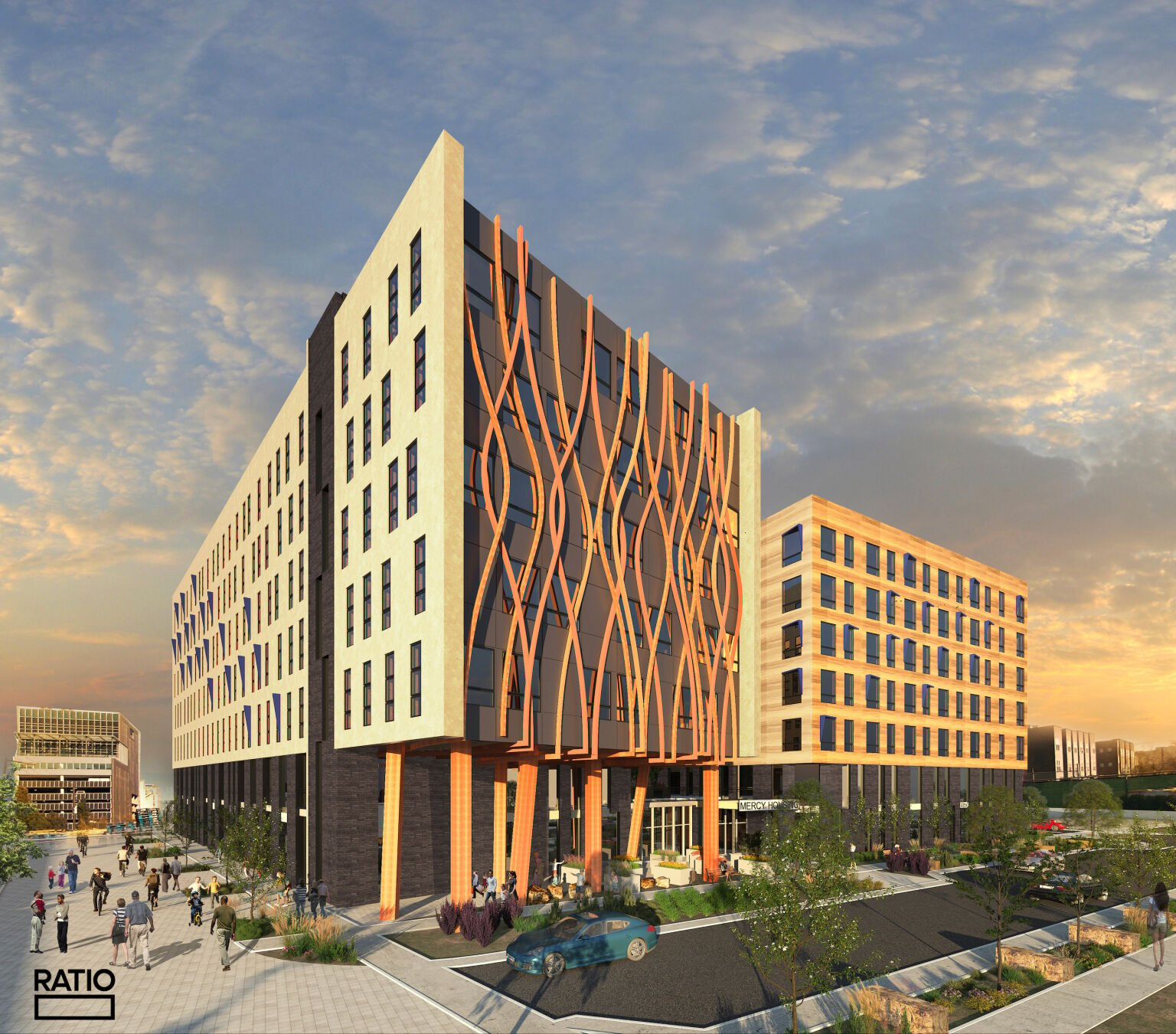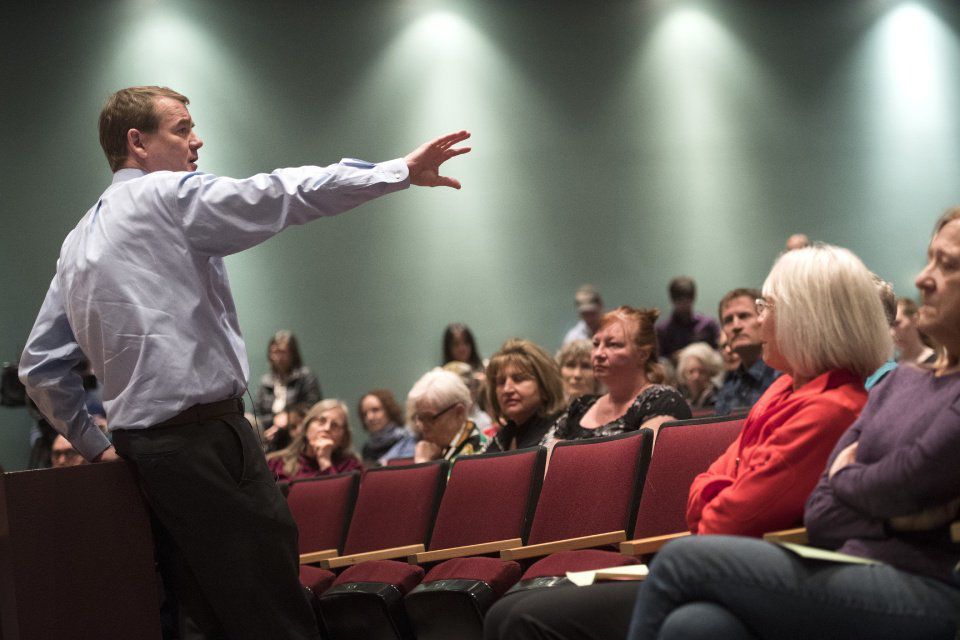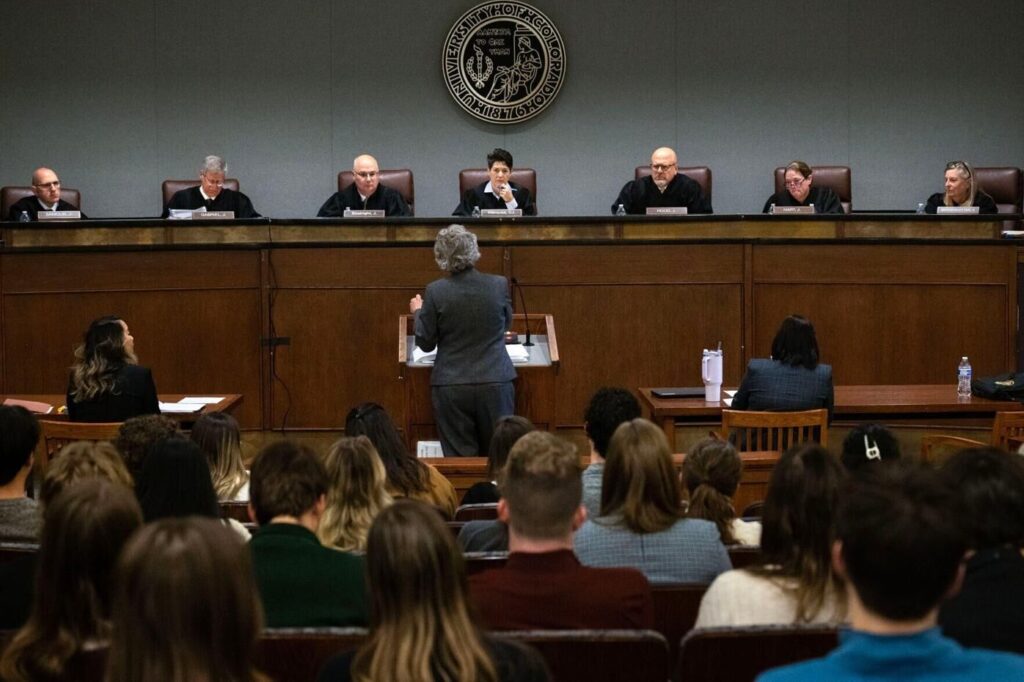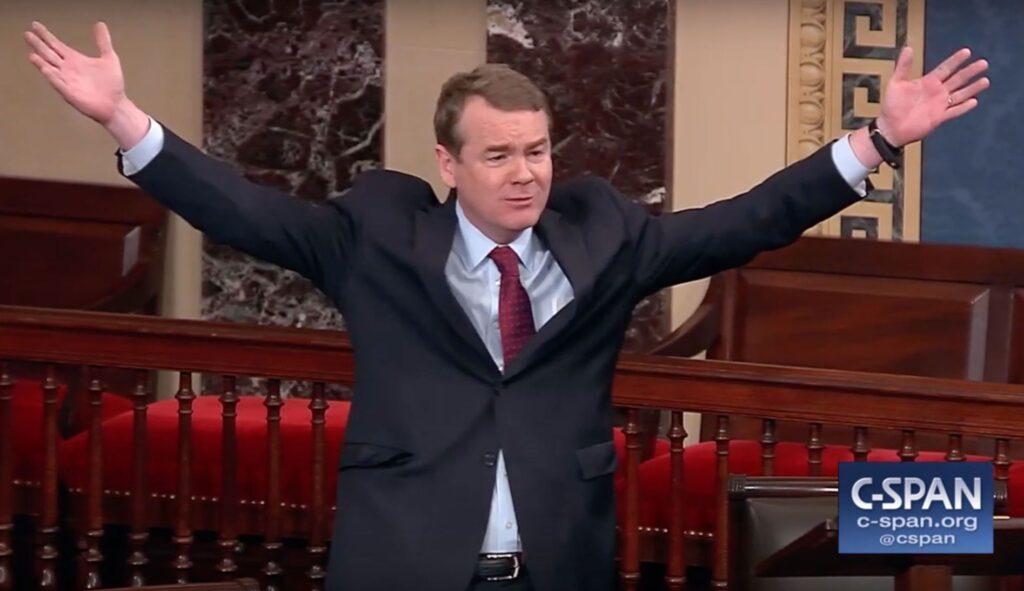A reach too far? Builders, realtors mirror worries raised by local governments about land-use bill
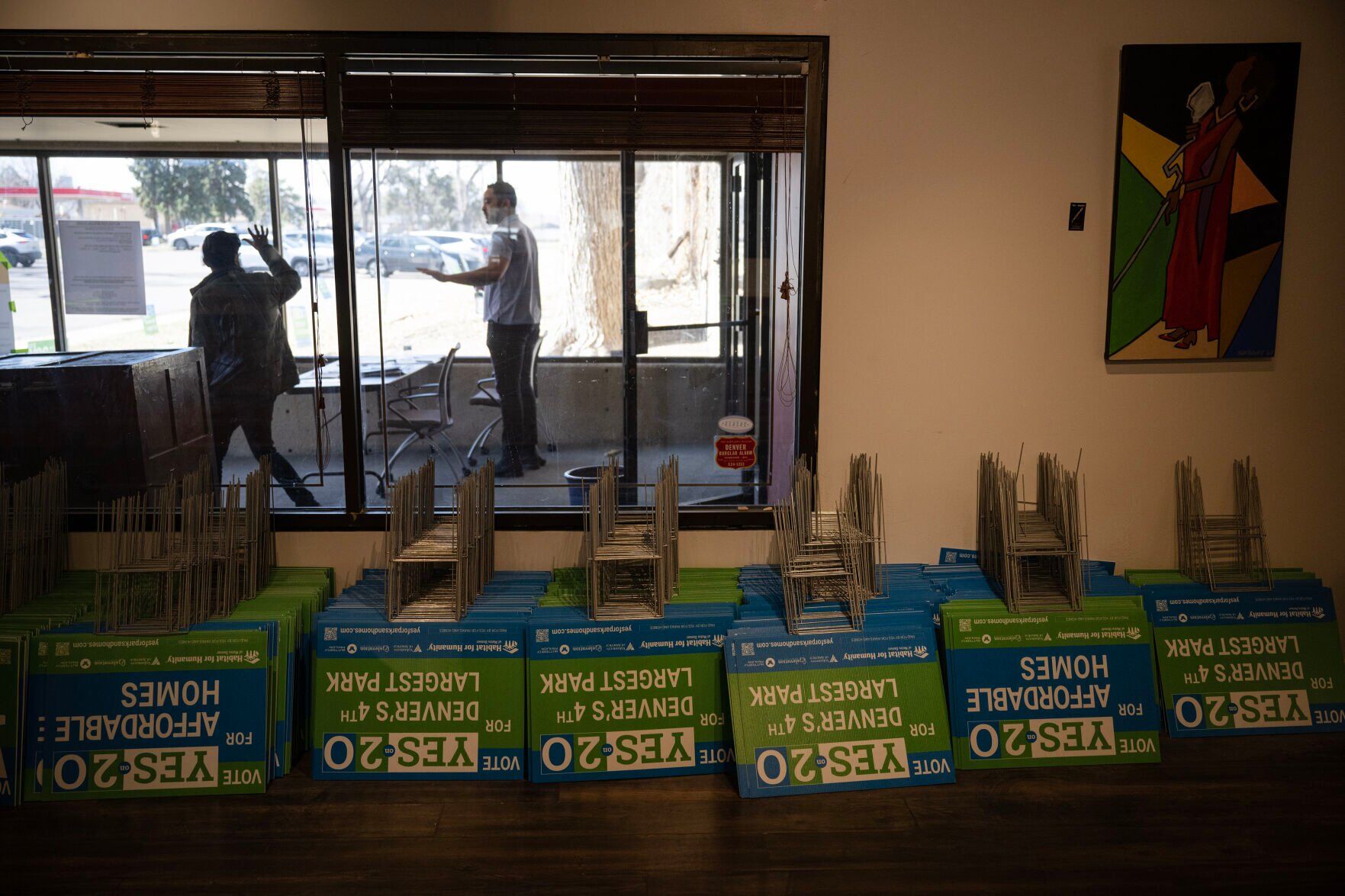
On the steps of the Capitol beside banners reading “A Home for Every Colorado Budget,” Gov. Jared Polis proposed a sweeping land-use bill three weeks ago that would enact massive changes to neighborhood zoning controls as a means to address Colorado’s housing crisis.
At its core, the proposal seeks to allow more density.
But residents of the largely single-family neighborhoods that wrap metro Denver and other Front Range cities were quick to express their surprise at the idea, as did the real estate agents and the builders that are drivers in how new homes are sized and built.
“Everybody would like to find ways to create affordable housing, but just increasing densities is probably not going to have that effect,” said Mark Harding, developer of the Sky Ranch master-planned community east of Aurora near Watkins, which has around 150 homes under construction now from the high $300s and low $400s – seen as very affordable after recent runups in the broader housing market.
Among other things, Senate Bill 213 would require Front Range municipalities and rural resort communities to either adopt “flexible minimum standards” or be mandated to use a state-developed model, which would include zoning changes.
Those flexible standards would include ADUs – accessory dwelling units, also known as in-law apartments or granny flats – and so-called “middle housing,” such as duplexes, triplexes, fourplexes and townhomes. Under those standards, the municipality can’t require parking but the developer can add it. Resort communities have additional flexibility to work regionally on housing strategies that would allow them to find the best places for more dense housing.
Supporters say the new approach is necessary to tackle Colorado’s acute housing needs. The housing package Polis is championing, for example, seeks to cut red tape, which backers say would allow for faster deployment of manufactured homes that can be built in just a few days but often have to wait a year or more to be placed on site. It also removes limitations for minimum unit sizes in urban communities, so long as those units comply with fire and building code standards.
Critics counter that the measure is a top-down approach, that it wrestles away control from local governments, that it shuts out community voices on land-use decisions, and that it lacks real affordability requirements.
Denver exodus
“There’s no way (the new bill) would get through in its present form,” added real estate broker Deviree Vallejo with LIV Sotheby’s International.
Vallejo and her team partner Liz Richards made around $100 million in sales in 2022. They often specialize in the kind of one-off urban projects that add new units to existing urban neighborhoods.
Regardless of the legislation’s fate, Vallejo is already seeing an exodus out of Denver because developers can’t make the economics work.
“Developers are already leaving the city and the metro area. They’re not going to build in Denver because they can’t make their proformas work,” Vallejo said.
She added that she knows firms that are departing, some leaving the state, after putting a pencil to the costs of new affordable housing requirements adopted by the city of Denver last year.
Republican legislators, greatly outnumbered in the new legislature, are wondering whether the bill represents a sizable misstep by Polis and other supporters, as they gauge the reaction of voters in their districts.
“I definitely think it’s a reach too far,” Senate Minority Whip Barbara Kirkmeyer of Brighton told The Denver Gazette. “You put a bill out that we’re going to take over your zoning, and then you’re shocked that people are upset.”
In his March 22 message, the governor had played up the planning process that reportedly involved 125 meetings with “stakeholders” preceding the draft.
“Thank you to this unprecedented broad coalition of business and labor, environmentalists and housing advocates, local elected officials and community leaders who have come together to support an effective Colorado solution to our housing challenges,” the governor told supporters.
But builders, Realtors, and city managers close to the land development process in the “Tier 1” cities prescribed for the most far-reaching changes insisted their interests weren’t better represented, and lawmakers quickly voiced those doubts.
Late last week, Sen. Kirkmeyer received 50 pages of fresh amendments to the bill, which had already run 105 pages when introduced, after widespread worries about its direction.
“When you’re getting that,” she said, “there’s a lot of evidence that you didn’t do as much ‘stakeholdering’ as you should have.”
Sen. Jeff Bridges, a Democrat representing several large Arapahoe County suburbs that have expressed alarm about the bills, told The Denver Gazette that he would not support the bill in its present form.
And last week, Denver Mayor Michael Hancock and City Council President Jamie Torres released a statement complimenting the governor for the bill’s underlying intentions but declining to back it. Two regional municipal bodies, the Colorado Municipal League and the Metro Mayors Caucus, also came out against the measure.
Undoing Denver’s look and feel?
Home building executives, who said they had been involved in the bill’s planning process, expressed reticence to go on the record about their doubts. Some privately voiced surprise at the direction of the bill, and they pointed at rising construction costs – rather than zoning codes – as a key reason why housing affordability continues to slip away in Colorado.
“We’re currently working to amend the bill. We’re not for it or against it,” said Ted Leighty, vice president and executive director of the Home Builders Association of Metro Denver, one trade group that Leighty said was included in discussions with the governor’s office prior to the bill’s launch.
The Denver HBA had been a supporter of Yes on 2O, the April 4 ballot measure that would have lifted development restrictions on Denver’s old Park Hill Golf Course site to allow a developer to build 2,500 to 3,100 new units, including some mandated-affordable homes, along with a park. Denver voters overwhelmingly rejected the initiative, which went to voters two weeks after the new housing bill was introduced, with proponents failing to draw even 40% of the tally.
Bill proponents blamed older voters for having killed the proposal.
“Voters over (age) 55 valued open space,” Yes-on-2O spokesperson Bill Rigler with Greenlight Strategy told The Denver Gazette following the initiative’s defeat. “We knew clearly, as all our polling showed, that dual messages would be required.”
The campaign ended up taking a two-pronged message – “yes for Parks and Homes” – that spoke to older voters concerned with open space, as well as to younger ones focused on affordability.
“I don’t think it had anything to do with age,” said City Manager John Jackson of Greenwood Village.
He and other managers of suburban towns closely followed the Denver election at a moment when they were reaching out to their own residents with issues about the governor’s proposed land-use bill.
At the core of the statewide measure is an undoing of the system of R-1 and R-2 zoning that defines the look and feel of many suburban areas around Denver, as well as vast areas of the City and County of Denver itself.
“What is proposed trumps all covenants; it’s a one-size-fits-all solution,” Jackson said. “They could scrape a house next to yours five feet from your property line and put up a six-plex. I have taken a lot of calls from people seeking information. They’re frustrated, and I haven’t taken any supporting it.”
“I know it will be watered down, but that’s dangerous legislation,” Kentwood Broker Todd Markus told The Gazette, noting that he had read all 105 pages of the original bill’s draft.
“I think it will change the look of Denver for the negative,” Markus added.
Markus, who conducts his book of business both in the city of Denver and in Arapahoe County, said he had moved to Denver from Toronto in part for the lower density feel of its neighborhoods and for the views facilitated by that openness. He noted that many areas, including the city of Denver, have done additional “overlays” to residential zoning specifically designed to keep a cohesive flavor to neighborhoods, as well as to preserve views.
There are no protections in the bill to prohibit builders or even individual residents from encroaching on such limits, Markus said.
Supporters of the governor’s housing plan argue that Colorado’s acute housing crisis permeates all levels – so much so that it warrants a statewide response.
Ray Rivera, a spokesman for Colorado Builds Better, said the crisis “doesn’t stop at city or county lines.” He outlined the challenges cited both by those who support and oppose the measure – workers being priced out of their communities and small business owners struggling to hire workers because housing for the latter is too expensive.
“Colorado families are feeling these impacts every day, and we can no longer wait,” Rivera said. “That is why we have a growing list of organizations eager to help get this bill across the finish line. The time for action is now.”
Denver or Tampa?
In addition to concerns about the city’s look and feel, municipal officials raised several other objections, including possible violation of the state constitution and home-rule provisions, and costs of rapid development for schools, roads and public safety.
“The Department of Local Affairs has no way they can manage development better than what suburban and rural government does,” Greenwood Village’s Jackson told The Gazette.
“Who pays for unfunded mandates? As city manager, that’s where I begin to look at all these costs,” Jackson said. “It’s my question to ask: Do you want your (emergency) response times to go up?”
Both city officials and real estate professionals also question the core premise as to whether the bill would deliver better home affordability.
“There’s nothing in the bill that guarantees affordability,” Jackson said. “What it does guarantee is more housing.”
Homebuilders say that rising costs are the real factor discouraging development, at a time when builders are failing to keep up with demand both in Colorado and around the country.
Custom builder Woody Howarth of Castle Rock based Sterling Homes said he was actively buying up available lots for spec homes in the Denver area coming into the pandemic, but he is now seeing Florida as a more promising future for his company.
“In Denver County, it’s six to nine months before we can dig a hole,” Howarth told The Gazette.
“In the Tampa area, it’s three to four weeks,” he added.
Howarth said he still plans to complete a 33-home custom project in a Parker area golf course that launches in 60 days, after what he said had taken four years during entitlement.
“But outside of that I’m not sure how much more we’re going to do,” he said.
“We want to build more houses,” said HBA’s Ted Leighty, adding that the bill in its current form probably works best for apartment developers and for custom builders and remodelers who would deal with new opportunities created in existing neighborhoods. But production builders, he added, wouldn’t find much to encourage them.
“Colorado still needs litigation reform,” Leighty added, noting that, without better protection for builders undertaking condo projects, little carrot exists to encourage them to do higher-density for-sale projects.
“Without that, we will continue primarily to see multifamily rentals,” Leighty added. “Colorado will lose a huge opportunity and will never reach its full potential until we fix construction litigation reform. We all need to be working together. While we welcome the conversation, we will not achieve full potential until we can.”
